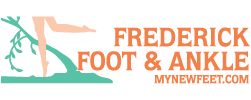The summer brings us sunshine and warmer days suitable for a range of fun to be had in the sun, but no pastime is more popular than the annual trip to the beach! While you kick back and put your feet up to enjoy the sights and sounds, there are some foot-related hazards you should keep in the back of your mind. We all know the laughing stock of the beach – the patron wearing his shoes and sandals in the sand. Yuck, right? They actually may be onto something.
Barefoot walking is something I am constantly advising patients against, but the beach just isn’t the same without the sand in your toes for most of us. That being said, the risk or fungus, warts, and foreign objects lie hidden to us until they become a problem!
Foreign objects are one of the main concerns on the beach. Although the patrol officers do their best daily to sweep the sand and clear away any garbage or imperfections that could inhibit a beach-goers good time, sharp objects such as sticks, garbage, or shells can make their way to the surface during heavy traffic times and pose danger to our barefoot fun. The best way to avoid these would be to wear some sort of foot wear, such as a sandal, that will provide some barrier to what lies beneath, and staying vigilant is always key during any galavanting. Sandals can also prevent the hot sand from burning the bottoms of your feet, which can ruin a vacation just as quickly.
We can’t see fungus or warts no matter how vigilant we are, unfortunately. These hidden little monsters favor warm, moist environments and are contagious if they’ve hitched a ride into to town on the feet of other patrons. While this won’t be an issue as much in the sand and surf itself, the areas around the beach, such as the pool deck and the foot rinse area outside most hotels, can be a perfect breeding ground for harmful microbes. The best way to avoid these troubling microbes again is, you guessed it, shoes! Your shoes will keep the barrier between the germs and your skin, and you won’t have to take the time to rinse them off separately – score!
Whether you’re venturing to the east or the west coast, always remember to wear sunscreen as well. Many travelers forget to protect the thin, sensitive skin around the top of the foot and end up with dry, peeling skin. Broken or damaged skin will leave you much more susceptible to germs and other hazards, too. If you run into trouble on your next summer adventure, remember Frederick Foot & Ankle has hours Monday-Saturday to keep you moving!
(#Summer #podiatrist #Fungus #Warst #Barefoot #Sandals #Feet #Beach)
